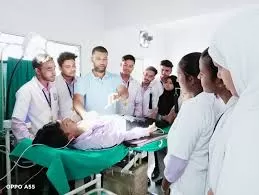A Diploma in First Aid and Patient Care typically equips individuals with the knowledge and skills needed to provide immediate care to individuals who have been injured or suddenly taken ill until professional medical help arrives. Here's an outline of what such a diploma might cover:
Basic First Aid Techniques: Training in basic first aid techniques such as CPR (Cardiopulmonary Resuscitation), wound care, bandaging, and splinting for fractures.
Emergency Response: Instruction on how to respond to various emergencies such as heart attacks, strokes, choking incidents, and allergic reactions.
Patient Assessment: Learning how to assess a patient's condition and prioritize care based on the severity of injuries or illnesses.
Medical Terminology: Familiarization with common medical terms and concepts to effectively communicate with healthcare professionals and understand medical documentation.
Infection Control: Understanding the principles of infection control and how to minimize the risk of spreading infections while providing care.
Communication Skills: Developing effective communication skills to interact with patients, their families, and emergency responders in a calm and reassuring manner.
Ethical and Legal Considerations: Understanding the legal and ethical responsibilities associated with providing first aid and patient care, including issues related to consent and confidentiality.
Special Considerations: Training on how to provide first aid to special populations such as infants, children, and elderly individuals, as well as individuals with disabilities.
Trauma Management: Instruction on how to manage traumatic injuries such as burns, fractures, and head injuries until professional medical help arrives.
Emergency Preparedness: Education on how to recognize potential hazards in the environment and take appropriate measures to prevent accidents and injuries.
Practical Skills Training: Hands-on training sessions to practice applying first aid techniques and responding to simulated emergency situations.
Certification: Upon successful completion of the program, participants may receive a certification or diploma indicating their proficiency in first aid and patient care.
This diploma can be valuable for individuals pursuing careers in healthcare, emergency response, childcare, education, sports coaching, or any other field where the ability to provide immediate medical assistance is beneficial.



